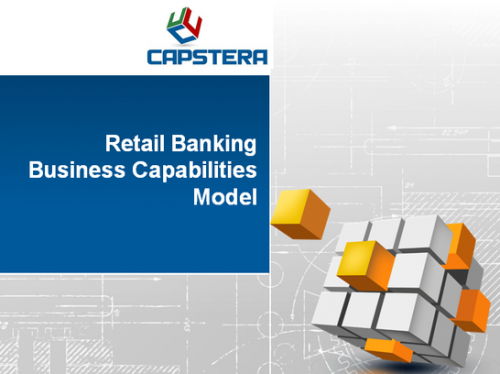
The banking business capabilities model is a strategic asset and critical bank enabler. Banks worldwide find themselves in the eye of a perfect storm, grappling with a constellation of challenges emanating from various macroeconomic and microeconomic trends. The combination of intensifying global competition, the squeeze of margin compression, onerous regulatory burdens, evolving consumer expectations, insurgent competition from start-ups, and the encroachment of established firms onto adjacent territories is reshaping the banking landscape dramatically.
In line with the adage, “People need banking and not banks,” there is tremendous unbundling in banking services. Today, Walmart and Amazon are a more significant threat than the money center bank. Moreover, so are digital upstarts with no legacy to burden them.
Global competition has exploded as banking has evolved into a digital battlefield. As a result, banks are no longer competing merely against their traditional counterparts; they now face intense rivalry from financial technology (FinTech) start-ups, non-bank financial companies, and even big tech firms exploring financial services. These players leverage technology to provide seamless, customer-centric solutions, thereby gaining market share and pressuring banks to stay relevant and competitive.
Margin compression further exacerbates the stress on banks. A low-interest-rate environment, combined with the rise of low-cost digital platforms, is steadily eroding banking profits. As a result, banks need to explore alternative revenue sources, such as fee-based services, and drive operational efficiency to offset the loss from narrowing interest margins.
Regulatory burdens are another critical factor contributing to the current banking crisis. A complex web of regulations designed to enhance financial system stability and protect consumers has unintentionally burdened banks with high compliance costs. The situation becomes increasingly challenging as regulators begin to scrutinize digital banking services.
Consumer expectations have evolved dramatically in the digital age. Today’s consumers demand seamless, personalized banking experiences akin to what they experience with leading tech firms. They expect round-the-clock services, digital interfaces, swift transactions, and data-driven personalized offerings. Unfortunately, traditional banks often struggle to meet these evolving expectations due to legacy systems and traditional operating models.
Lastly, the banking industry faces threats from disruptive start-ups and established firms targeting banking adjacencies. While start-ups bring fresh approaches to traditional banking functions, established firms leverage their vast customer base and robust infrastructure to offer banking services, further fragmenting the market share.
Facing this multi-front assault, banks are at a strategic imperative for transformation. They must redefine their business models, accelerate digital transformation, and invest in innovative technologies. Leveraging data analytics for personalized offerings, streamlining operations through automation, and adopting a customer-centric approach will be vital for survival and growth. Moreover, regulatory technology (RegTech) can help banks comply with regulations more efficiently and cost-effectively.
Simultaneously, banks should explore collaboration opportunities with FinTechs and big tech firms. Such partnerships could blend the innovative prowess of tech firms with the banks’ regulatory knowledge and customer trust, leading to a win-win situation.
The challenges banks face today are more significant than ever. However, these challenges also allow banks to transform and reinvent themselves. As a result, the banking industry of the future will likely look vastly different from what it is today, and the decisions banks make now will define their place in that future.
Business Architecture is emerging as a critical linchpin in the financial sector’s quest to redefine itself amidst changing market dynamics. At the intersection of business strategy and execution, banks can chart a clear and structured roadmap toward digital transformation. This holistic approach, underpinned by business capability modeling, offers a systemic understanding of the bank’s organization, processes, and technology, providing an invaluable scaffold to plan and execute an effective digital transformation program.
Historically characterized by sprawling operational silos and legacy systems, banks need business architecture to break down these barriers and establish an enterprise-wide view. This holistic vision allows banks to identify functional overlaps, redundancies, and gaps in their operations, which in turn, facilitates strategic alignment of their resources and processes. Moreover, by providing a unified and clear blueprint of the bank’s structure, business architecture helps banks streamline their operations and eliminate unnecessary complexity, fostering agility and resilience.
Business architecture also serves as the keystone for strategic planning, allowing banks to chart the course for their digital transformation. With a comprehensive understanding of the current state, banks can better define their desired future state, including new business models and capabilities. In addition, as a strategic planning tool, the business architecture facilitates the prioritization of digital initiatives, helping banks to allocate resources more effectively and track progress towards their digital transformation goals.
Banking Business Capabilities Model
One of the main tools of business architecture is business capability modeling. This approach allows banks to map out their core capabilities – essentially, what they must do to effectively deliver their products and services. In addition, business capability modeling provides a stable and technology-agnostic view of the business, enabling banks to understand the impact of strategic decisions on their organization’s capabilities.
A banking business capabilities map helps by abstracting the essence of what a bank does into a set of granular business capabilities. These capabilities can follow the typical value chain and value streams to capture the core banking functions. As a result, the capabilities are helpful to both business teams and technology teams.
In the context of digital transformation, business capability modeling is indispensable. It helps banks to identify which capabilities need to be enhanced, retired, or developed to drive digital innovation. For instance, a bank might discover through capability modeling that it lacks the necessary capabilities in data analytics or cybersecurity, providing a clear direction for its digital transformation efforts. Moreover, by focusing on capabilities, banks can make strategic technology investments, ensuring that technology is an enabler of business objectives rather than an end.
Furthermore, business capability modeling facilitates effective collaboration between business and IT teams. Translating business needs into capabilities provides a common language that both sides can understand, promoting a more integrated approach to digital transformation.
The strategic importance of business architecture and business capability modeling in banks’ digital transformation cannot be overstated. As banks grapple with redefining themselves in the digital age, these tools offer a structured and practical approach to managing this profound change. By embracing business architecture, banks can transform themselves into more agile, resilient, and customer-centric organizations, ready to seize the opportunities of the digital era.
Instead of building a banking business capabilities model from scratch, banks can purchase a pre-built and comprehensive business capabilities map and customize it to their needs. (We offer capabilities maps for Retail Banking, Investment Banking, Commercial Banking, and other financial services categories.)
Banking Business Capabilities Model Use Cases:
- Strategic Decision Making: Business capability modeling helps banks to make informed strategic decisions by providing a clear view of the organization’s strengths and weaknesses. It allows banks to understand their current capabilities and gaps, informing where they need to invest, divest, or transform to achieve their strategic objectives.
- Capital Allocation: With a clear understanding of their business capabilities, banks can make more informed capital allocation decisions. They can identify the capabilities that drive value and differentiation, helping them to allocate their capital more effectively and strategically to these high-value areas.
- Capability Prioritization: Business capability modeling allows banks to prioritize capabilities based on their strategic importance. It can reveal which capabilities need to be developed or enhanced to meet business objectives and those which may be less critical, aiding in prioritizing initiatives and resources.
- Digital Transformation: Business capability modeling is crucial in planning and executing digital transformation initiatives. Identifying the capabilities that need to be digitally enhanced helps banks create a more targeted and effective digital transformation roadmap.
- Technology Enablement: By mapping out the business capabilities, banks can align their technology investments with business needs. This ensures technology is a strategic enabler, enhancing capabilities and driving business value.
- Application Portfolio Rationalization: Business capability modeling can guide banks in rationalizing their application portfolios. By understanding which applications support which capabilities, banks can identify redundancy, streamline their application portfolio, and reduce complexity and cost.
- Buy/Build Decisions and Vendor Evaluation: Understanding their business capabilities can help banks make more informed decisions about building or buying solutions. It can also guide them in evaluating and selecting vendors, ensuring that the chosen solutions align with their capability needs and strategic goals.





